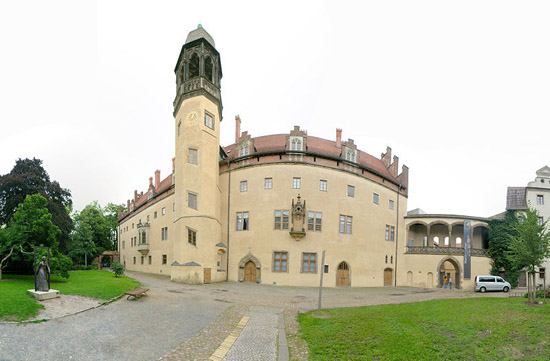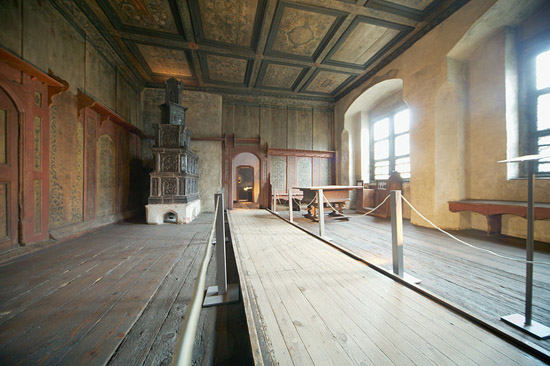Martin Luther as Faust
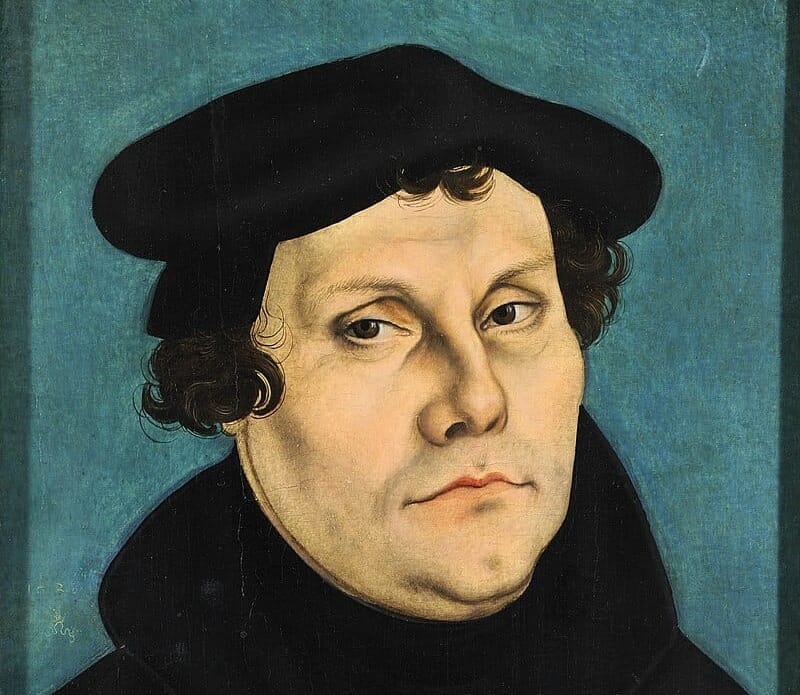
The real Faust figure was Martin Luther, who died in 1546, a few years after the necromancer Georg Faust. Both are associated with Wittenberg.
Luther was Goethe’s intellectual ancestor, upending the northern European world forever by defying the Devil (the Pope in Rome) just as Faust does. He successfully redefined Christianity in man’s image and now God could be German too. It was a tradition in German thought that would reach its climax centuries later when Nietzsche declared that God was dead.
Luther was in an ambiguous position. On the one hand he was confronting the Devil in Rome; on the other he was a monk and monks were seen by many as corrupt and hypocritical. This woodcut of the 1520's or 1530's by Erhard Schön is Protestant propaganda, showing the Devil playing a monk like the bagpipes. It was widely noticed that the vows taken by monks and nuns, especially the vow of celibacy, were rarely observed. Some have wrongly assumed this monk is Luther, but he was certainly a target for all sides.
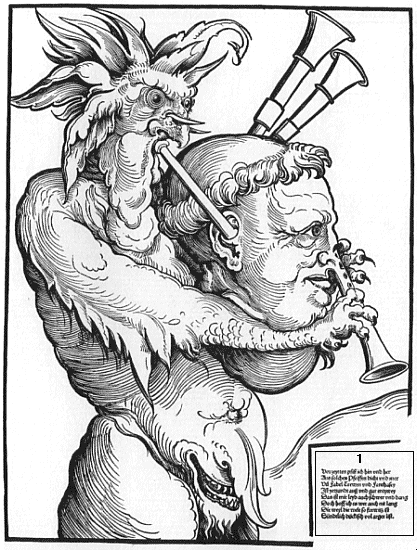
Luther was at his most subversive when he celebrated marriage (i.e. physical sexuality) over celibacy. He even went so far as to arrange a daring rescue mission of nine nuns from a local convent. For nuns to escape risked the death penalty, so Luther had them secreted out in a covered wagon, hidden among fish barrels. He ended up marrying one of them, Katharina von Bora, in 1525, and she became an impressive figure in her own right. The painting below (and the painting of Luther) were by family friend Lucas Cranach the Elder.
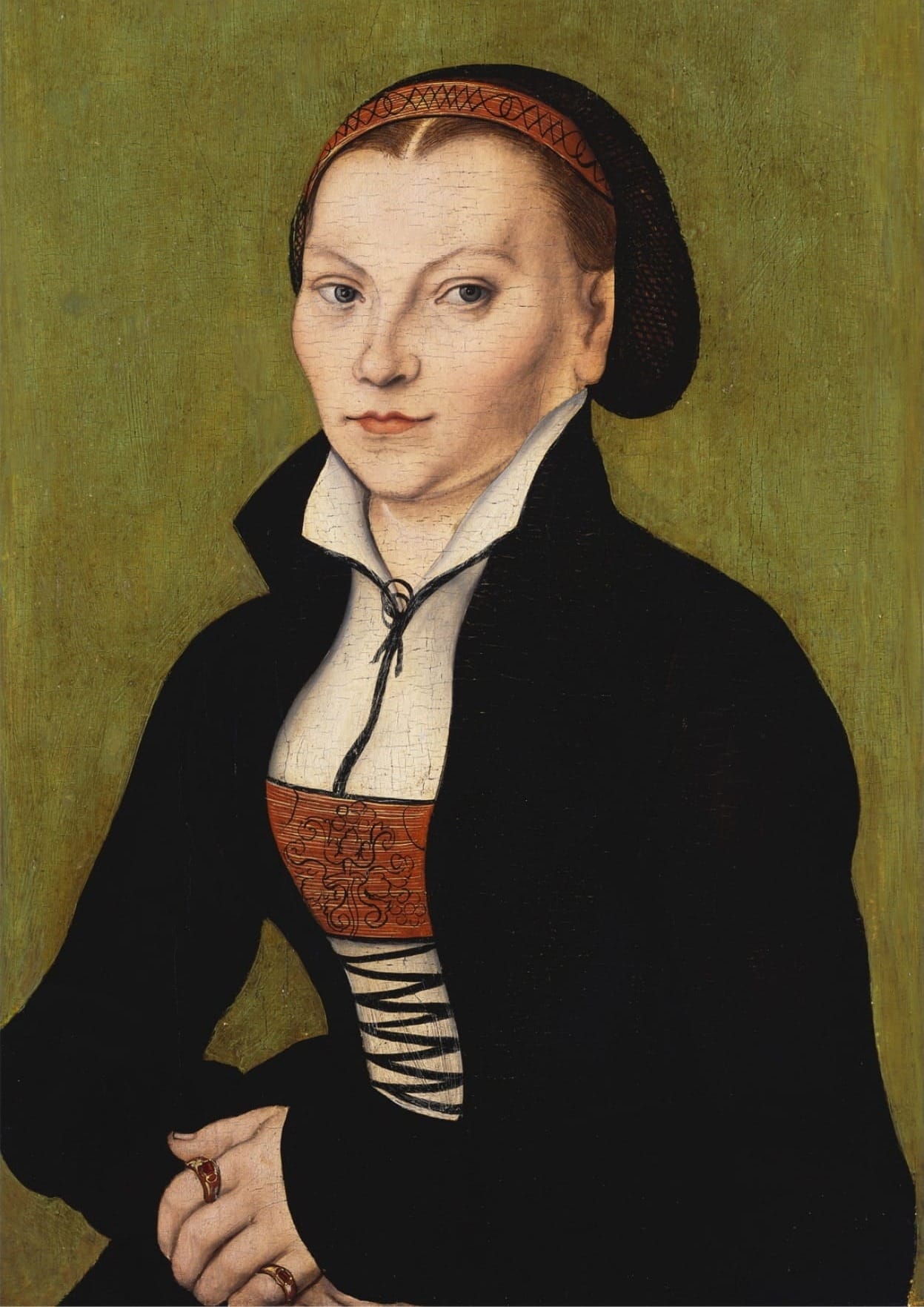
Also see Luther's fight with the Devil at the Wartburg, here.
Below is Luther room in Wittenberg. Luther and Melanchthon in conversation (1821) by Carl Friedrich Hampe
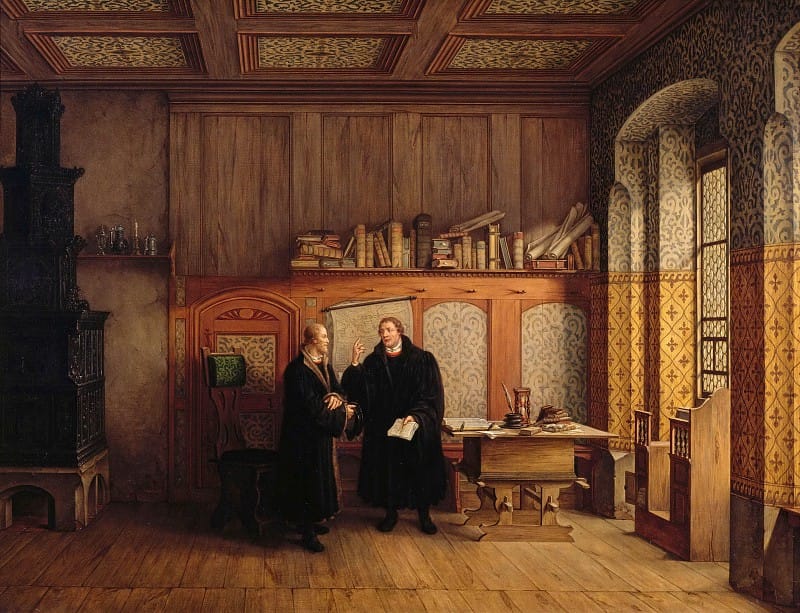
Below is the Lutherhaus (Luther's house) today in Lutherstadt-Wittenberg (as the town is now known) and below that is Luther's living room which, until now at least, has been preserved with some of the original flavor and may be compared with the painting above.
